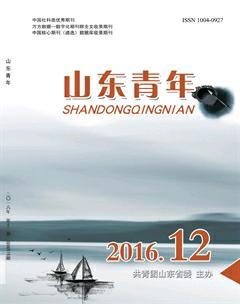An analysis of one English translation of “Where is my road”
王梦函�オ�
Abstract: This paper gives a brief introduction to Alexander Fraser Tytlers Three Principles and background of the song “Where is my road”, and then, compares the characteristics of the original Chinese version and one English translation, analyzes the English translation of the song based onTytlers Three Principles. Through the study of the translation of “Where is my road”, it can be concluded that Tytlers Three Principles is applied in it.
Key words:Where is my road; Tytler; Three Principles
1. Introduction: “Where is my road”, extremely popular as an ending song of TV series “Western Journey”. Through the comparison of the characteristics of the original Chinese version and one English translation, this paper analyzes the English translation of the song based onTytlers Three Principles. Through the study of the translation of “Where is my road”, it can be concluded that Tytlers Three Principles is applied in it.
2. An analysis of one English translation of “Where is my road” based onTytlers Three Principles
2.1.Alexander Fraser Tytlers Three Principles
Three Principles was proclaimed by Alexander Fraser Tytler(15 Oct. 1747-5 Jan. 1813) in the year of 1790 in his book Essay on the Principles of Translation, it includes: (1)That the Translation should give a complete transcript of the ideas of the original work; (2)That the style and manner of writing should be of the same character with that of the original; (3)That the Translation should have all the ease of original composition.
2.2.Background of the song “Where is my road”
“Where is my road”, extremely popular as an ending song of TV series “Western Journey”. “Western Journey” is a historic Chinese novel that is considered one of the four classics from Ming Dynasty. “Western Journey” is a combination of myth parable and comedy. It is a story about a Buddhist monk and bunch of animals with human characteristics. The animals actually in the story are a very fairy tale type of mood and they traveled west to India to find Buddhist scriptures. The animals themselves are celestial being in mortal forms and they have magical powers that protect them from the goblins and evil spirits.
2.3.The characteristics of the original Chinese version and the Englishtranslation
The lyrics of both the original Chinese version and the English translation of “Where is the road” are simply written.
From the first two lines, we can see a vivid picture, that a Buddhist monk and bunch of animals with human characteristics traveled west to India to find Buddhist scriptures with Sandy carrying burden, Pigsy leading a horse.
The third line and the fourth depicted the boring of the time-wasted journey. Tripitaker, monkey king, Pigsy and Sandy must surmount 81 obstacles including overcoming such supernatural beings as cow demon, the spider beast and a living skeleton. These obstacles symbolize the difficulties and challenges that people meet in the course of ideals.
The fifth line to the tenth described their bravery, toughness, optimism.
The last four lines is the climax of the whole lyrics. Western journey is a journey of the purification of the mind so that the entire expedition to find Buddha scriptures is actually a way of achieving spiritual goodness. It also tells us that nowhere cannot be reached as long as we start from small things.
2.4.The application of Tytlers Three Principles in the English translation of the song
Firstly, the English translation of the song gives a complete transcript of the ideas of the original Chinese version. First of all, a vivid picture, that a Buddhist monk and bunch of animals with human characteristics traveled west to India to find Buddhist scriptures is also depicted in the English translation. No information being amplified or deleted. For example, the first two lines of the original Chinese version is literally translated as “you are carrying burden, I am leading a horse” and the last four lines is word-for-word translated as “a series of changes of seasons, you taste bitterness and happiness, dare to ask where is road, the road under foot”, the ideas of original work are completely expressed.
Secondly, the style and manner of the English translation of the song is of the same character with that of the original Chinese version. The original Chinese version was written in symmetrical short sentences which has a beauty in form, and the English translation of the song is also translated in symmetrical short sentences which brings sense of beauty. The original Chinese version only uses simple, easy expressions, so is the English translation of the song. For example, the fifth line and the seventh line of the original Chinese version are translated as “overcoming hardships” and “finish fighting sufferings”, they are of the same style and manner.
Thirdly, the English translation of the song have all the ease of the original Chinese version. Both the original Chinese version and the English translation of the song are all easily understood. Both of them are present a vivid picture, that a Buddhist monk and bunch of animals with human characteristics traveled west to India to find Buddhist scriptures before our eyes. The translation of the last two lines is example to the point.
3. Conclusion: Through the study of the translation of “Where is my road”, it can be concluded that Tytlers Three Principles is applied in it. And it is helpful for us to have a better understanding of Tytlers Three Principles and the translation of lyrics.
[参考文献]
[1]Tytler.A.F.,2010,《论翻译的原则》(Essay on the Principles of Translation)[M].北京:外语教育出版社。
[2]羅新、郑朝予,2006,《英语诵读精华》[M].北京:中国对外翻译出版公司。
[3]谭载喜,2006.西方翻译简史(增订版).北京:商务印书馆。
[4]张培基,1980.英汉翻译教程[M],上海:上海外语教育出版社。
(作者单位:沈阳理工大学,辽宁 沈阳 110159)

